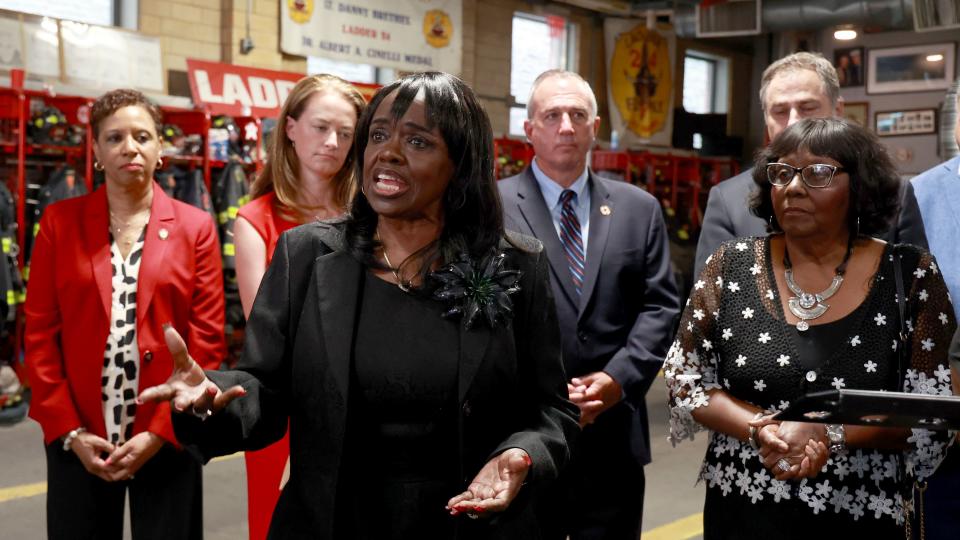Civil rights leaders honor FDNY for condemning Birmingham officials’ use of fire hoses, dogs on children in 1963 protests
Months before four little girls were killed in a Birmingham, Ala., church bombing that helped turn the tide of the civil rights movement in 1963, their friends and classmates bravely took to the streets in protest racial segregation.
There, in a brutal confrontation forever seared in the grainy images of black-and-white TV, they were attacked by snarling dogs and high-pressure water hoses unleashed by unrelenting officers under the callous and cruel direction of the city’s Public Safety Commissioner Bull Connor.
Among those who watched in horror at the time were members of New York City’s Fire Department, whose union strongly and publicly condemned the attack, a stance that still resonates with the demonstrators.
Sixty years later, alumni of what history dubbed “The Children’s Crusade” joined Attorney General Letitia James, City Council President Adrienne Adams and FDNY Lt. James McCarthy of the city’s Uniformed Fire Officers Association at a Manhattan fire house Monday to commemorate the union’s stand.
“This shameful and deplorable conduct by the City of Birmingham . . . has brought discredit to the honorable status of professional firefighters,” the union declared in a resolution at the time.
“This local union shall protest most vigorously to the City of Birmingham . . . for the debasement of the image of Fire Fighters by misusing them to hurt rather than to help people in danger.”
“We found out about the resolution about five years ago,” Gwendolyn Gamble, who was 14 when she became a civil rights soldier, said on Monday.
“To hear and find out and see for myself that there were other people in this country who condemned what Birmingham denied doing — they still denied doing that to the children — it told me that they must be ashamed of what they did to us. But you know what? Those fire hoses and those dogs made us who we are today.
“And you know what else? If I could turn back the clock.I would do it again, Gamble said. “I believe standing up, not just for Blacks, not just for Mexicans, but for all men. That’s what I was taught in my home.”
Gloria Randall, 76, who was just 16 when the stinging water cannons ripped into her flesh, recalled Birmingham in 1963 as “the most segregated and racist place in America. And for [the FDNY] to stand up and say, ‘We will not go along with this,’ thank you from the bottom of my heart. It’s my privilege, it’s my pleasure and it’s my honor to be here standing before you.
“I have been praying about the things that happened to us as children in Birmingham. It has bothered me all my life. I’ve just gotten to the point where I can talk about it,” Randall said.
The strategy to use the young demonstrators — devised by Martin Luther King Jr. and his associates at the Southern Christian Leadership Conference — helped pave the way for the passage of the 1964 Civil Rights Act.
But the community paid a heavy price. The Sixteenth Street Baptist Church, where the protest was organized, was bombed on Sept. 15, 1963. Killed in the blast were Addie Mae Collins, Cynthia Wesley, Carole Robertson, all age 14, and 11-year-old Denise McNair.
Gwendolyn Webb, who was 14 when she walked out of the church and marched that year, was the second Black woman to become a police officer in Birmingham.
“It wasn’t just a fire hose, It was a cannon connected to a fire hose,” said Webb, 75. “But I thank God that we’re here to tell the story.”


